Goddess (Devi)
Note: This review relates to the release of both Goddess and Two Daughters.
When I woke up one afternoon in a groggy haze, I walked towards my door to check the post. Low and behold, I found a jiffy bag with my name on it. After ripping it open over a cup of tea and a cigarette, I gazed upon two Indian DVDs called Goddess and Two Daughters. I'll tell you the truth, I didn't know what the heck to expect from these movies and I'll be the first to admit I know next to nothing about Indian cinema or Hindu culture. The first thing I did, to acquaint myself, as any film fan would do, was to rip open the plastic wrapping like an animal, turn over the box and read the blurb. Curiosity began to pound at my brain as I read all these wonderful quotes by all these wonderful directors. If the likes of Akira Kurosawa profess 'Not to have seen the cinema of Ray means existing in the world without seeing the sun or the moon'. And someone like Martin Scorsese declares 'Ray's magic, the simple poetry of his images and their emotional impact will always stay with me'. Then I know I must have been missing something special for all these years. My sense of excitement peaked, its not often you discover a filmmaker who makes other directors declare such pleasant things. Moreover, my cup of tea went cold and my cigarette went out…
Satyajit Ray is a director I knew next to nothing about before doing research (even spelling his name correctly took me awhile). The only thing I remember reading about him was a few years ago, in film magazine, maybe Empire or Total Film. In the 1960s he penned a script called The Alien and presented it to Hollywood. However, after a disagreement, Ray became disillusioned by the limitations of mainstream filmmaking and cancelled the project. However, the studio held onto the rights of the script and apparently, as people say, in 1982 a film script called E.T. revealed a sky-scraping resemblance to The Alien script…
After a few moments, I popped the disks into my DVD player. The menus were nothing special and there were no features (not even a biography). Nevertheless, when I begin to watch the films I realised, you can't help but to be shocked by the stark realism and emotional content of Satyajit Ray:-
Two Daughters contains two mini-movies. In the first 'The Postmaster', Nandalal has a new job in a malaria-infested village. He befriends his servant-girl Ratan and starts to teach her how to read and write. When he contracts malaria, Ratan nurses him to health but due to the poverty of the village Nandalal wishes to transfer to another job. Ratan is hurt that her newfound friendship is about to be broken…
In the second segment 'The Conclusion', Amulya has finished his exams in the city and returns to his village. His mother wants him to marry. She sets him up with a local girl but Amulya isn't happy with his mothers conventional choice. However, Amulya meets the free-spirited Mhihmoyee who's 'brazen' tomboy behaviour is the talk of the town…
Goddess explores rural Bengali life in 1860. Doyamoyee lives a village with her husband Umaprasad. When her husband goes to Calcutta to educate himself, Doyamoyee takes care of her father-in-law. Asleep one night, he has a vision that his daughter-in-law is the reincarnation of the goddess Kali. Everyone in the village begins to believe Doyamoyee has supreme power, an otherworldly deity that controls their fate. When Umaprasad returns from Calcutta, he's shocked by all this fanaticism. He endeavours to reason with his father but to no avail. Umaprasad wants to escape this madness with his wife, but she is unwilling to leave, as she too believes she is the reincarnation of the goddess Kali…
Verdict: These two films were directed a year between each other, Goddess in 1960 and Two Daughters in 1961. They are a perfect companion piece. There is no fault with the subtitles on these versions. They don't distract too much from the picture and they don't jump off the screen before you've had chance to read them. If you are interested in learning more about Satyajit Ray, log onto YouTube and watch the documentary about him:-
If your fascination begins to tingle after watching this then I implore you to find these two films on DVD, they are wonderful. As Akira Kurosawa said, 'Not to have seen the cinema of Ray means existing in the world without seeing the sun or the moon'. After watching these two movies I have to agree with this enlightening statement.
The magic of Ray's cinema lies in the naturalistic black and white photography of everyday life. Rather than displaying a glossed over fantasy vision of India like Bollywood Cinema these films display a realistic depiction of humanity. Even though it's difficult to fully understand and appreciate Ray's world, as an outsider to Indian and Hindu culture, you can't help but to be affected by his simple portrayal of humanity.
Disc: If you're the type of person who doesn't give a dam about the definition of a film, you will love these two black and white grainy movies. It adds to the charm. Give a film fan an old battered VHS copy of a movie they haven't seen before and they will be forever grateful. I was thankful that I got to see two Satyajit Ray movies. Hopefully, surfing the internet will reveal more of his majestic gems. I heard the Apu Trilogy and The Apprentice were good movies. I'm poised at my letterbox with my cigarette and cup of tea, waiting like a hungry dog…
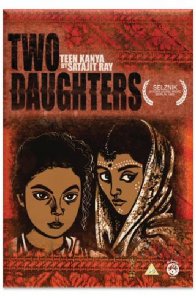
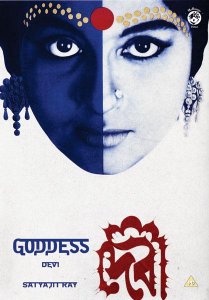


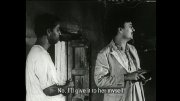



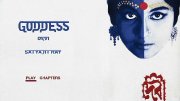
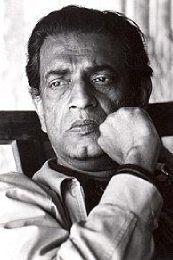
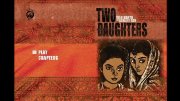
































Your Opinions and Comments
Be the first to post a comment!